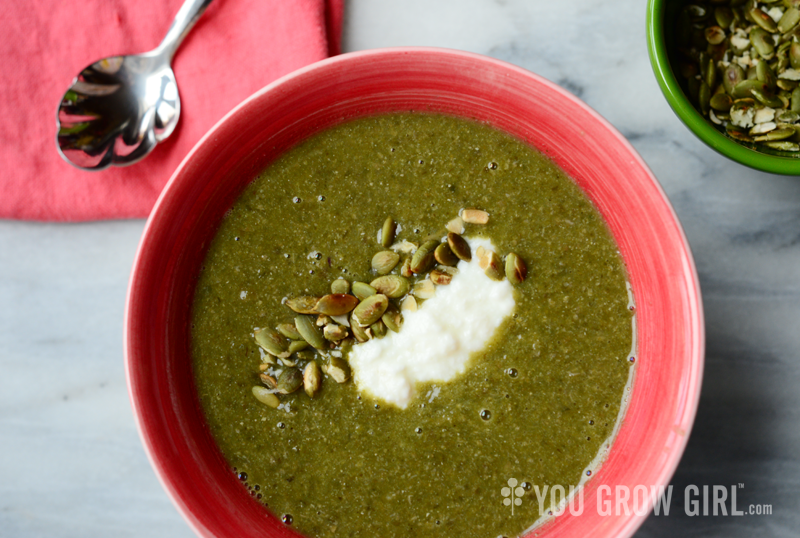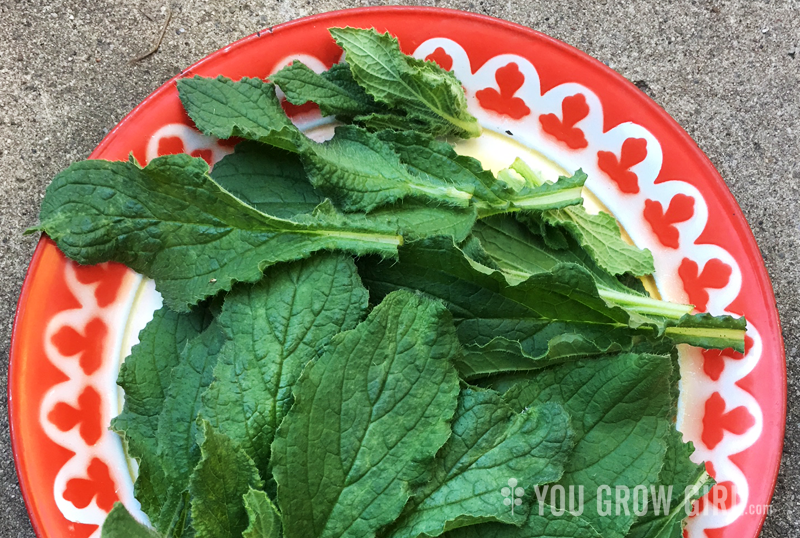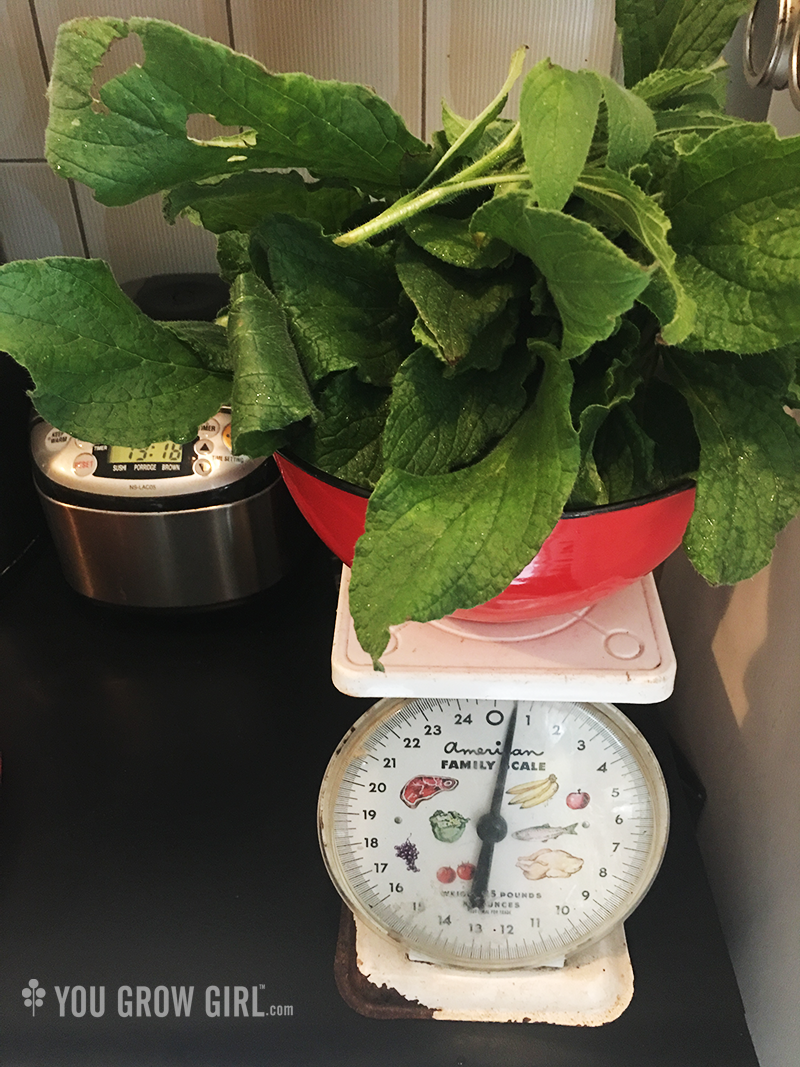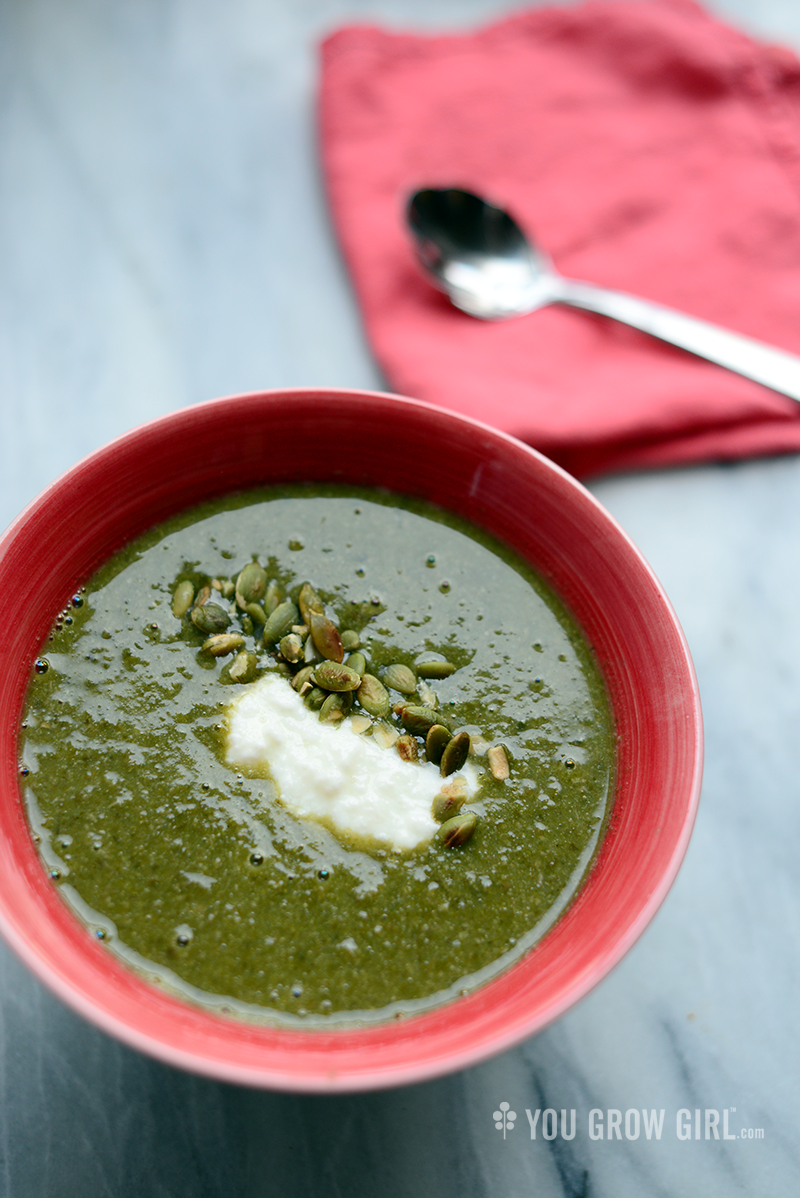
Last week I wrote about growing borage as well as my recent forays into using the leaves more readily as an edible staple. While I have found several ways to use the prickly greens, making variations on this soup recipe has proven to be most successful and best-suited to my current diet. As I have found, there is no one right way to make this soup and I’ve offered substitutions and suggestions below that will allow you to adapt it to suit your taste and needs.


Overall, I find that borage’s light cucumbery flavour blends into the soup and is almost entirely lost depending on the potency of the ingredients you add in. A splash of lemon is not required, but I learned many years ago when I was a short order cook in a fancy restaurant, that a bit of acid in a greens soup really brightens and lifts the flavours.
As I mentioned in the previous post, borage leaves are mucilaginous, and I’ve found that this quality helps to make a sturdy soup that does not require any additional thickening agents.
p.s. This past weekend, while pursuing the shelves of my local library branch, I picked up the book, A Feast of Weeds: A Literary Guide to Foraging and Cooking Wild Edible Plants by Luigi Ballerini and happened to open it right to a section on borage! While there was no recipe for soup, there were several others. He recommends blanching from 3-5 minutes, but I have found that to be unnecessarily long.

Recipe: Borage Leaf Soup
- Advisory Note: Before preparing borage leaves to eat, please read the advisory info I’ve posted here under Eating Borage.
I’ve made this soup several times with a range of substitutions, but kept it simple here with ingredients most people will have in their gardens or can easily purchase in store. Experiment with whatever fresh herbs are in season. Oregano, celery leaf, and thyme are good options. You can also substitute some or all of the borage leaf for other leafy greens. I subbed in kale in the fall when borage was nearing the end of its season and radish leaf in summer when they were taking over a bed. You can also make this a vegetarian dish by removing the sausage. No substitution is required; however, I would suggest adding in more garlic, onion, or other herbs to boost the flavour as I kept this recipe light to account for these ingredients in sausages.
Tips for harvesting borage: I suggest wearing garden gloves, especially a pair with leather palms and finger tips. I cut the newest, softest growth and trim off the much larger, older leaves on the spot, allowing them to fall into the bed or a bucket in which I will later make fertilizer tea.
Ingredients:
- 1/2 pound fresh borage tips (young leaves and stems)
- 2-4 breakfast or other simple sausages (about 1/2 pound), roughly chopped
- 2 ‘Egyptian Walking’ onions and green, roughly chopped (substitute 4 green onion)
- 2 cloves garlic, minced (or tender, young, spring garlic with greens)
- 5 cups broth/stock or water
- About 1/2 pound potatoes or sweet potatoes, unpeeled and diced
- 1 tablespoon fresh parsley, roughly chopped
- 1/2 lemon (optional)
- Sea salt and cracked black pepper to taste
- About 2 tablespoons thick, plain yoghurt(optional)
- Handful pepitas (peeled pumpkin seeds), toasted and smashed (optional)
- 1 tablespoon chopped fresh chives (optional)
To blanch the borage leaves, fill a large pot with water. Add a large pinch of salt and bring to a boil. Add the borage and boil for 1-2 minutes. Strain and plunge into cold water. Squeeze out excess water once cool to the touch.
In the same pot, cook the sausages, onions, and garlic over medium heat. I find that no additional fat is required since the sausages have plenty, but you can add a splash of water to prevent sticking until the fat seeps out from the sausages or some butter or oil if the sausages are too dry. Cook until the onions are translucent and soft, about 10 minutes.
Add the potatoes and broth. Bring to a boil, then reduce the heat and simmer with the lid on until the potatoes are soft, about 10-20 minutes.
Add the borage and parsley and cook another 5-10 minutes until the parsley is thoroughly wilted and the greens are heated through.
Turn off the heat and puree the soup with an immersion blender. Season to taste with salt and lemon juice.
Serve soup warm or cold with a dollop of yoghurt, pepitas, and chopped chives, if desired.
I am so going to try this! thanks much for sharing. I might even have enough usable leaves left in my garden- borage is one of the few plants still holding out green against the frost.
This sounds really, really good; we’re going to have a lot of borage going on our homestead next year, and this looks like a mouthwatering way to make use of their greens!
Thanks! I’ll try this next year. Is it important to toss the blanching water? Or could you put the borage in as the last ingredient to blanch right in the soup?